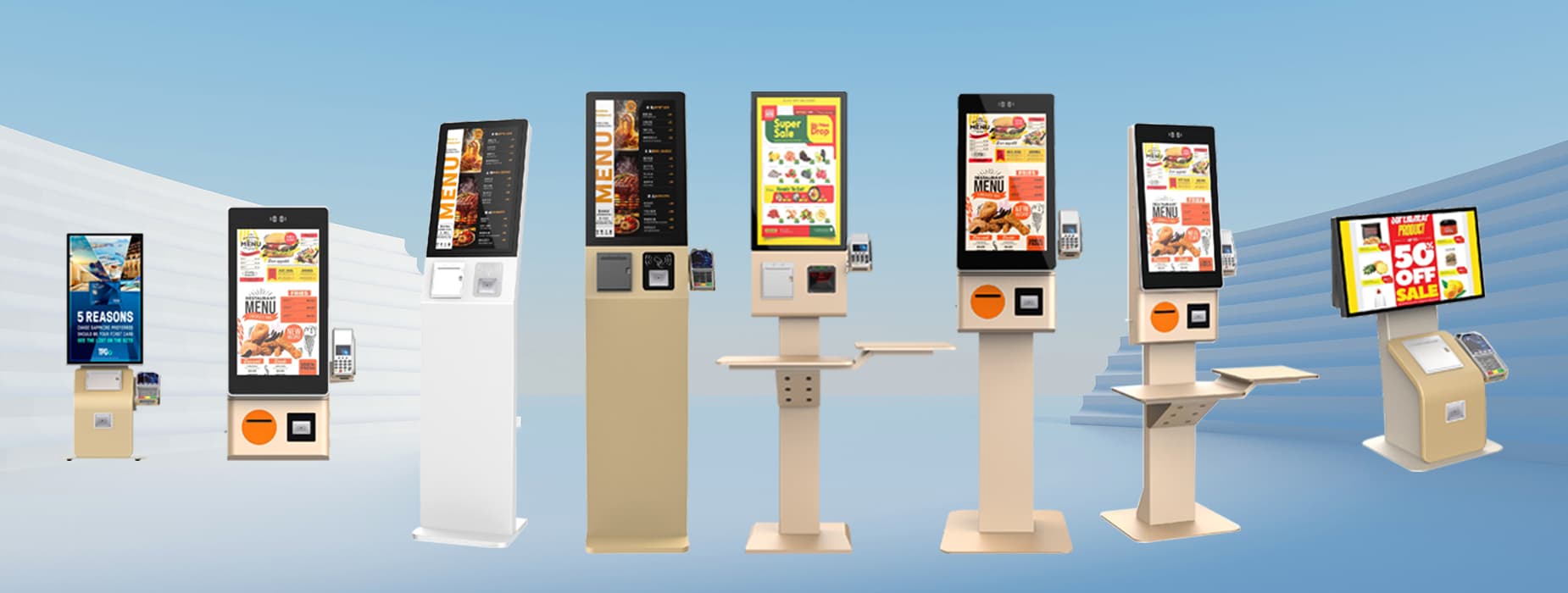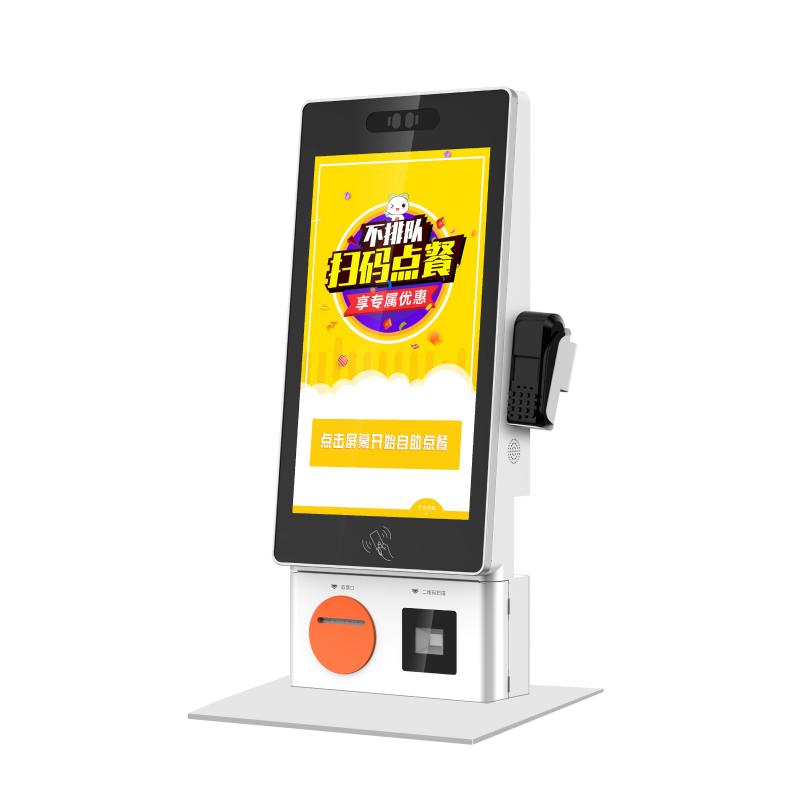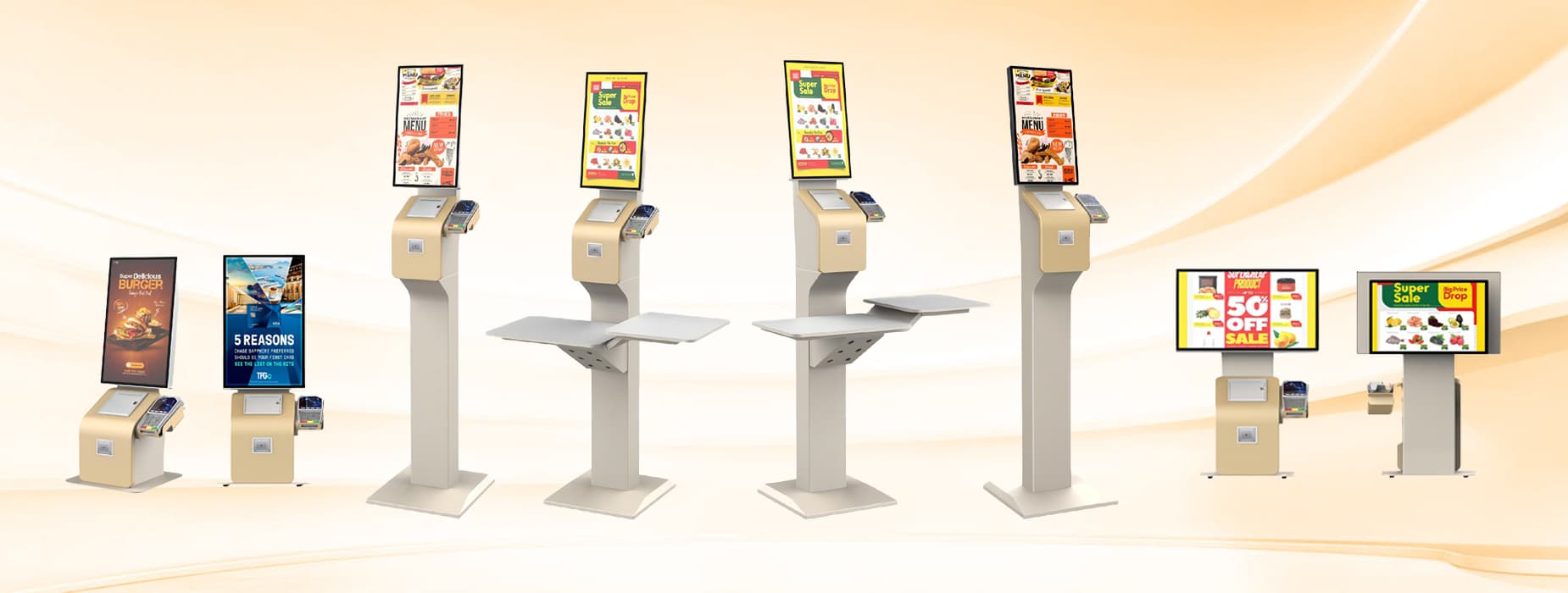Self ordering kiosk is a digital touchscreen system that allows customers to browse menus, customize orders, and make payments without interacting with staff. Typically found in fast-food restaurants, cafes, and retail environments, these kiosks enhance efficiency by reducing wait times, minimizing order errors, and offering a personalized experience. Customers can pay via various methods, including cards, mobile payments, or loyalty points, making the process seamless and convenient.
A self ordering kiosk is an interactive touchscreen device that enables customers to independently browse menus, customize their orders, and complete transactions without needing assistance from staff. Commonly used in fast-food chains, cafes, and retail environments, these kiosks streamline the ordering process by reducing wait times, enhancing order accuracy, and allowing for personalized choices. They support multiple payment options, such as credit/debit cards, mobile wallets, and loyalty programs, offering a convenient and efficient user experience. Additionally, self-ordering kiosk can also upsell products and collect data on customer preferences, helping businesses optimize their services.

| Component | Description | Specification |
|---|---|---|
| Touchscreen Display | High-resolution, responsive display for user interaction | 21.5" to 32" Full HD, Capacitive Touch |
| Processor | The central processing unit that powers the kiosk's software and operations | Intel i5/i7 or ARM-based Processor |
| Payment Module | Integrated system for processing payments | Supports NFC, EMV Chip & Pin, Magnetic Stripe, QR Code Scanners |
| Printer | Device for printing receipts and order confirmations | Thermal Printer, 80mm Paper Width, Auto Cutter |
| Operating System | The software environment that runs the kiosk application | Windows 10 IoT, Android, or Linux |
| Connectivity | Network options for connecting to the internet or local systems | Wi-Fi, Ethernet, 4G LTE |
| Camera & Sensors | Optional components for additional functions like facial recognition or proximity detection | HD Camera, IR Sensors |
| Enclosure | The physical housing that protects the internal components | Durable metal or plastic, customizable branding, ADA compliant |
| Mounting Options | Methods for installing the kiosk in different locations | Wall-mounted, Floor-standing, Countertop |
| Software Interface | The user interface and backend system that manages orders and integrates with POS systems | Customizable UI, Multilingual Support, Integration with POS & CRM |
| Security Features | Mechanisms to ensure the security of transactions and user data | Encrypted Payment Processing, Secure Boot, Tamper-resistant Design |
1. Touchscreen Display
|
|
Description: The processor is the brain of the self-ordering kiosk, responsible for running the operating system, handling user inputs, and processing transactions. A powerful and efficient processor ensures that the kiosk operates smoothly without lag, providing a seamless user experience.
Specification: Self-ordering kiosks typically use Intel i5 or i7 processors for high performance, especially in busy environments. Alternatively, some kiosks may use ARM-based processors, which are known for their energy efficiency and are commonly used in devices running Android. The choice of processor affects the speed and responsiveness of the kiosk, particularly when handling complex tasks like multi-user interactions or running advanced applications.
Description: The payment module is a critical component that allows customers to complete their transactions securely. This module must support various payment methods, including traditional and contactless options, to cater to diverse customer preferences.
Specification: A robust payment module in a self-ordering kiosk supports NFC (Near Field Communication) for contactless payments, EMV Chip & Pin for secure credit and debit card transactions, Magnetic Stripe readers for older cards, and QR Code scanners for mobile payments. The module must comply with PCI-DSS (Payment Card Industry Data Security Standard) to ensure the security of all transactions.
Description: The printer is used to provide customers with receipts, order confirmations, or promotional vouchers. It is an essential component, particularly in settings where customers require a printed record of their transaction.
Specification: The printer in a self-ordering kiosk is typically a thermal printer, known for its speed and reliability. It uses 80mm wide paper rolls, which are standard in the industry, and includes an auto-cutter feature to neatly cut the paper after printing. This type of printer is maintenance-friendly and does not require ink, as it prints by heating the paper.
 |
|
Description: Connectivity options allow the kiosk to communicate with external networks, such as the internet, point-of-sale (POS) systems, and other digital infrastructure. Reliable connectivity is essential for real-time data processing, remote updates, and transaction processing.
Specification: Most self-ordering kiosks support multiple connectivity options, including Wi-Fi for wireless internet access, Ethernet for a stable and fast wired connection, and 4G LTE for cellular connectivity, useful in locations without fixed internet infrastructure. These options ensure that the kiosk can operate in various environments, from busy urban locations to more remote settings.
Description: Cameras and sensors add advanced functionalities to the self-ordering kiosk, such as facial recognition, user tracking, and proximity detection. These features can enhance the user experience by enabling personalized interactions or ensuring the kiosk is activated when a customer approaches.
Specification: A high-definition (HD) camera is commonly integrated into the kiosk for facial recognition or security purposes. Infrared (IR) sensors or motion detectors can be used to detect the presence of a user, automatically waking up the kiosk from sleep mode when someone approaches. These components are optional but increasingly common as kiosks become more advanced.
Description: The enclosure is the outer casing of the kiosk, providing protection for internal components and contributing to the overall aesthetic appeal. It must be durable, tamper-resistant, and designed to accommodate the kiosk’s intended use environment.
Specification: The enclosure is typically made from durable materials such as metal or high-strength plastic. It is often customizable to feature the branding of the business. For outdoor or rugged environments, the enclosure is weatherproof and tamper-resistant. ADA (Americans with Disabilities Act) compliance is also a key consideration, ensuring the kiosk is accessible to all users.
Description: Mounting options determine how the kiosk is installed and positioned within a space. These options affect the kiosk’s accessibility, usability, and visibility.
Specification: Self-ordering kiosks can be configured as wall-mounted units, floor-standing units, or countertop models, depending on the available space and user needs. Wall-mounted and countertop kiosks are ideal for small spaces, while floor-standing units offer greater flexibility in placement and visibility. The mounting hardware is usually adjustable and designed to be secure, stable, and easy to install.

Description: The software interface is the front-end application that users interact with to place orders and complete transactions. It must be intuitive, visually appealing, and responsive to ensure a smooth user experience.
Specification: The software interface is customizable to align with the brand’s look and feel. It supports multiple languages, catering to diverse user demographics, and integrates seamlessly with POS systems, customer relationship management (CRM) software, and other back-end systems. The interface often includes features like upselling prompts, order tracking, and loyalty program integration.
Description: Security features protect the kiosk from unauthorized access, fraud, and data breaches. These features are essential to maintaining customer trust and ensuring the safety of transactions.
Specification: Security measures include encrypted payment processing, which protects sensitive financial data during transactions. The kiosk may also feature secure boot technology, preventing unauthorized software from running on the device. Additionally, the enclosure is designed to be tamper-resistant, and the system may include monitoring software that alerts administrators to any suspicious activity. Compliance with industry standards like PCI-DSS is mandatory to ensure the kiosk meets security requirements.
A self ordering kiosk is a digital device that allows customers to place orders and make payments independently, without the need for direct interaction with staff. Typically found in restaurants, fast food chains, and retail stores, these kiosks feature a user-friendly touchscreen display where customers can browse menus, customize their orders, and complete transactions. Key components include a powerful processor, a secure payment module supporting various methods like NFC and credit cards, a printer for receipts, and robust software that integrates seamlessly with the business's systems. Self-ordering kiosks are designed for convenience, enhancing the customer experience by offering quick, efficient, and personalized service.